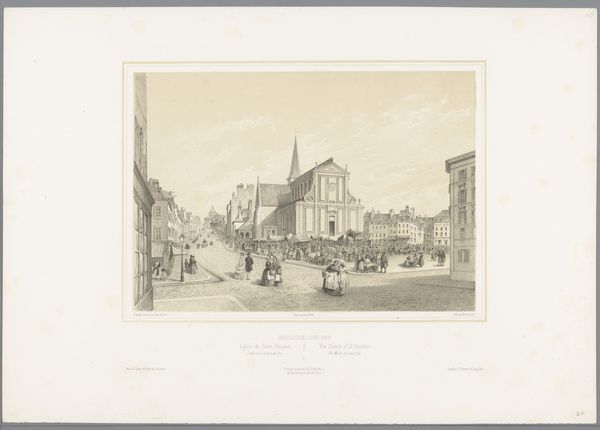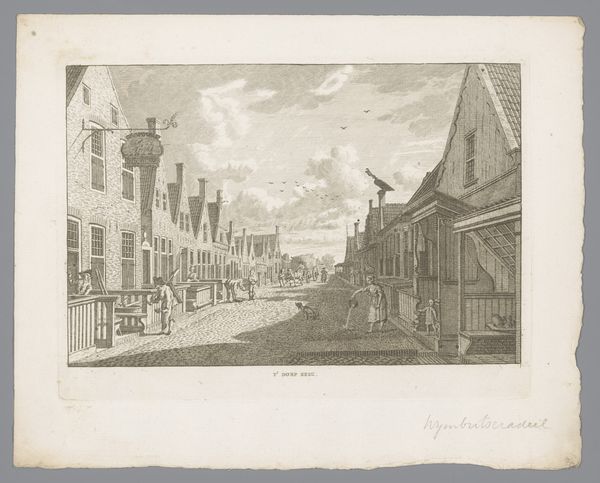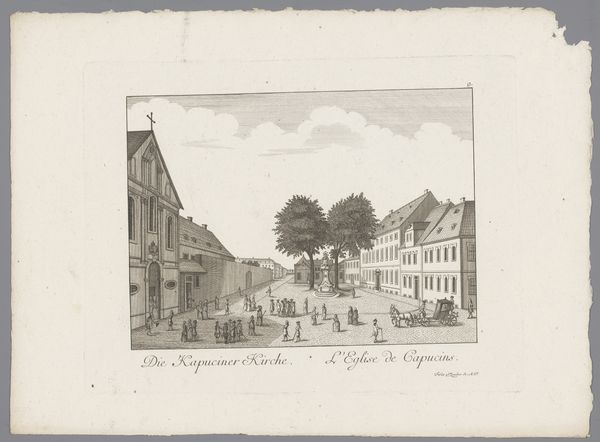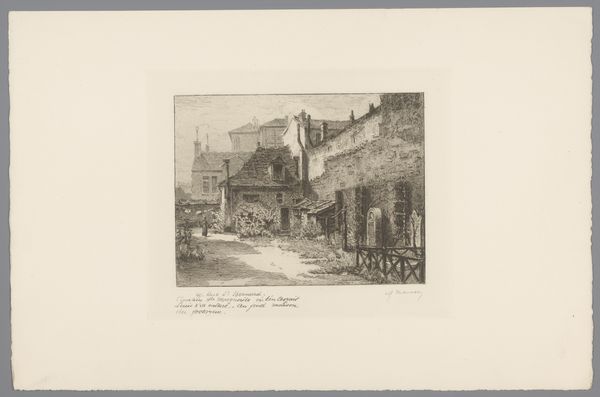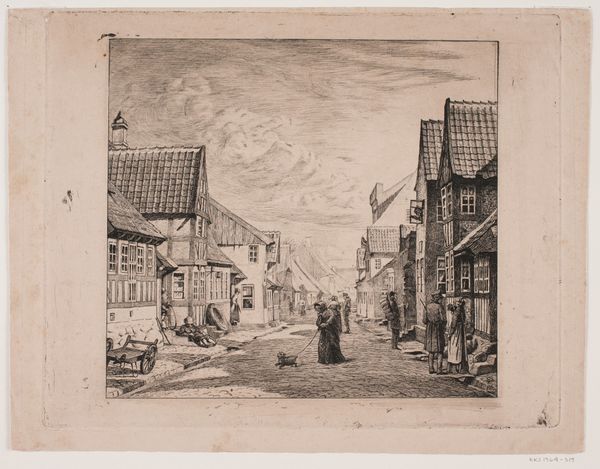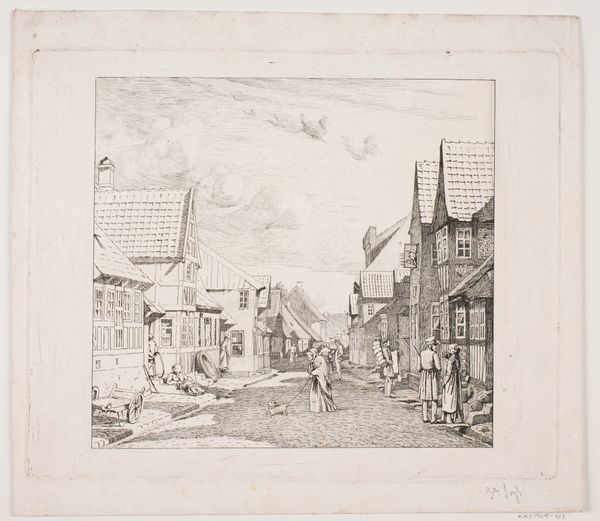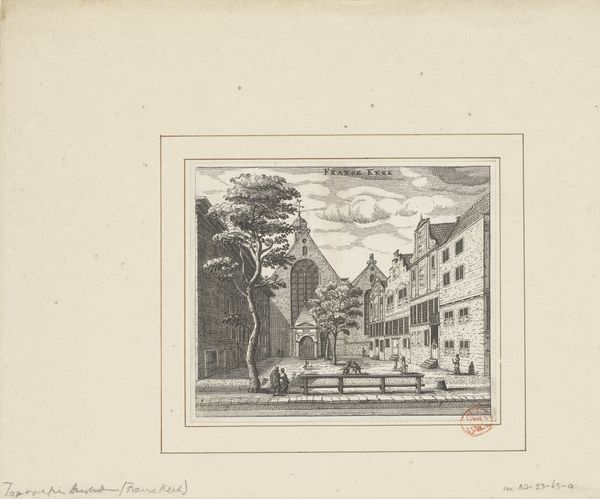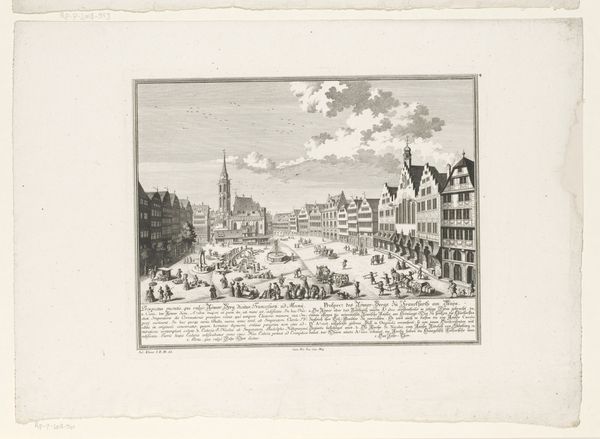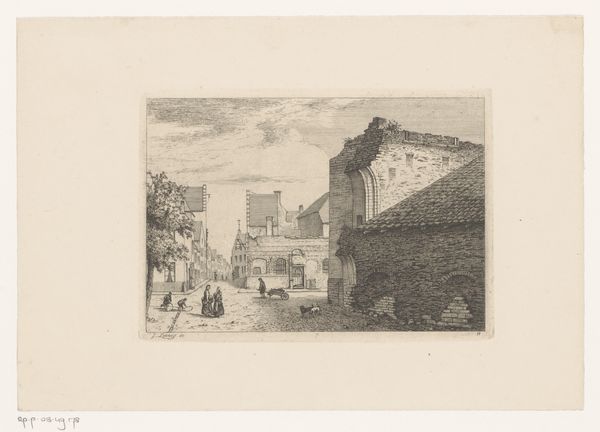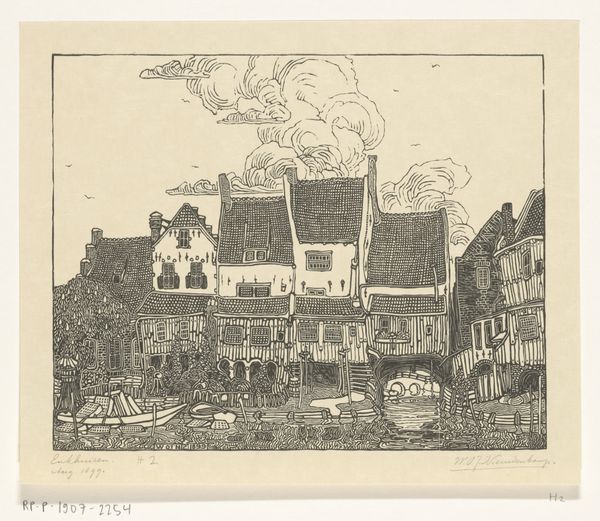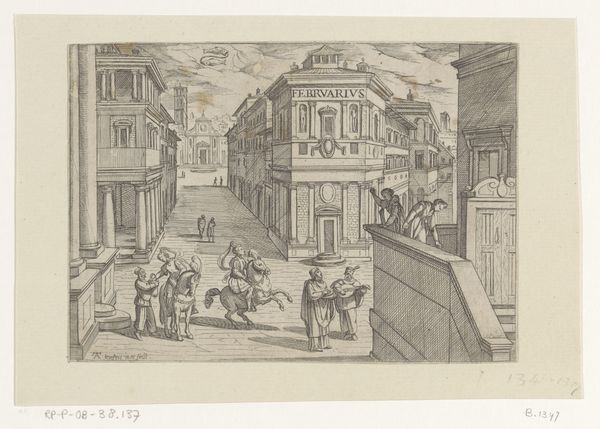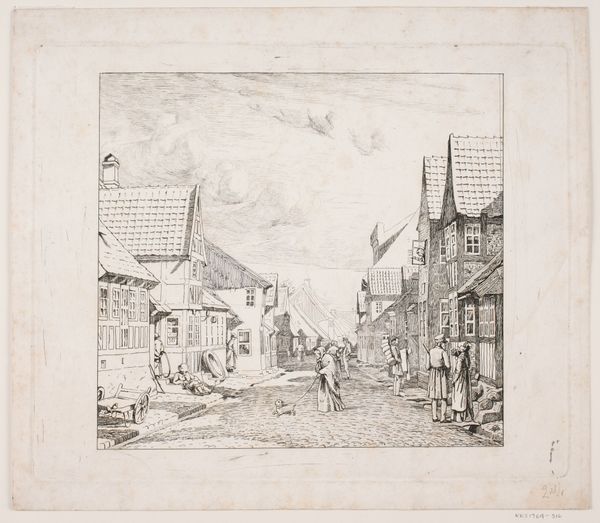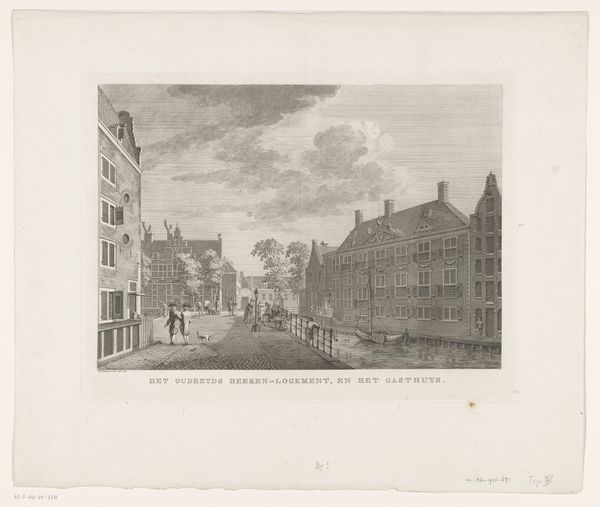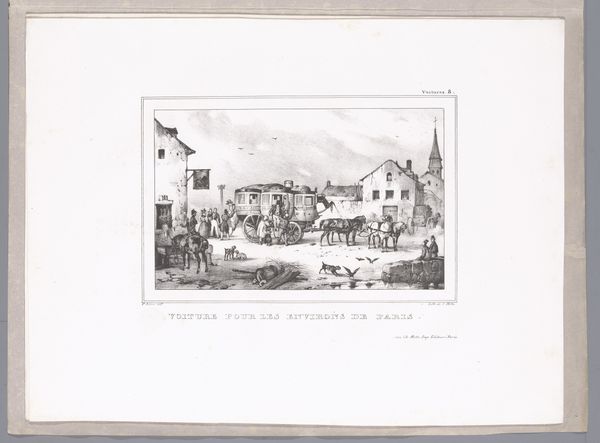
Gezicht op de binnenplaats van het Lutherse Diaconie Weeshuis te Amsterdam c. 1695 - 1700
0:00
0:00
anonymous
Rijksmuseum
drawing, print, paper, engraving
#
drawing
#
narrative-art
#
baroque
#
dutch-golden-age
# print
#
landscape
#
paper
#
cityscape
#
engraving
Dimensions: height 158 mm, width 189 mm
Copyright: Rijks Museum: Open Domain
Curator: Let’s focus now on a Dutch Golden Age print, circa 1695-1700. It’s titled "View of the Courtyard of the Lutheran Deaconry Orphanage in Amsterdam.” It's an engraving, unsigned, so attributed to Anonymous, that captures a slice of Amsterdam’s civic life. Editor: It strikes me as somber. The light is muted, despite it being an outdoor scene. The rigid geometry of the buildings almost cages the figures in the courtyard. It gives the feeling of order imposed over the lives within. Curator: Indeed. It's important to remember the period. The late 17th century Netherlands was seeing immense wealth and global power but also navigating complex religious and social strata. Orphanages, like the one depicted here, served as crucial, yet often austere, institutions. They offered a path, but within strict societal norms. Editor: And that plays out visually. See how the children are separated by gender? The figures are almost regimented in their placement. This wasn't just about providing shelter; it was about instilling a certain order, reflecting a hierarchical social structure. What power dynamics are being internalized in these children, within that space? Curator: Absolutely. The Lutheran orphanage wasn't merely a building, but a socio-political statement. The building's prominent position, even shadowing the Catholic orphanage across the canal, highlights the religious landscape of the time and perhaps a competition for influence in charitable works. Editor: It’s a visual manifesto, embedding the Lutheran presence within the cityscape. Thinking about space and control, it's difficult to not question if this view presented on the engraving can reveal an oppressive, paternalistic structure through architecture and social relations. The buildings, the fence... Curator: Precisely. While seemingly a simple city scene, it provokes us to consider the multifaceted ways in which power and social control were visually communicated and experienced in Amsterdam. It calls us to think of social spaces as something imbued with control, a kind of early theory of performativity. Editor: It has moved from city scape into landscape of control. Thinking of our contemporary concerns, about social equality, safe spaces and self-determination, seeing this from 300 years ago makes me ask: how much have things truly shifted? Curator: A compelling thought. It is often when we reflect on how things used to be that we can better understand the status of things as they are.
Comments
No comments
Be the first to comment and join the conversation on the ultimate creative platform.
